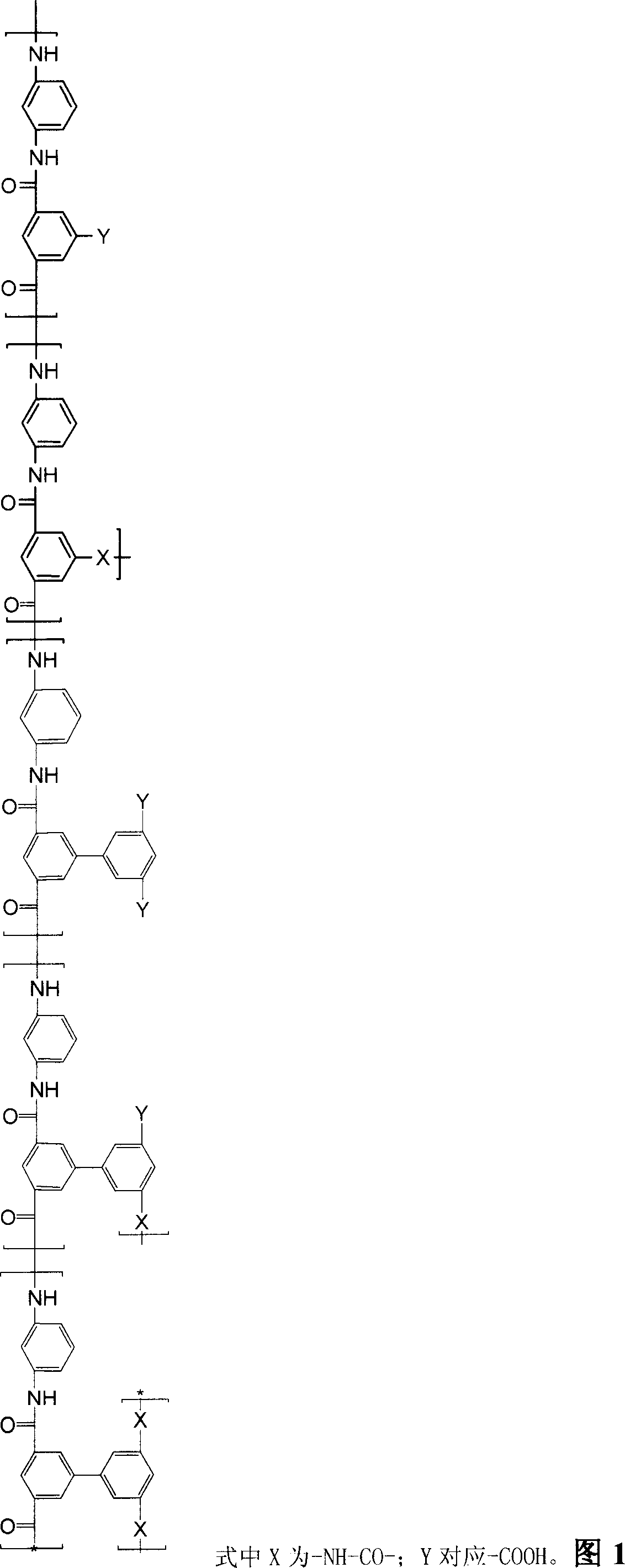Aromatic polyamide reverse osmose composite membrane
A technology of reverse osmosis composite membrane and aromatic polyamide, applied in the field of water separation
- Summary
- Abstract
- Description
- Claims
- Application Information
AI Technical Summary
Problems solved by technology
Method used
Image
Examples
Embodiment 1
[0066] 99.0g of polysulfone with a mass concentration of 16.5%, 81.0g of ethylene glycol monomethyl ether with a mass concentration of 13.5%, and 0.18g of sodium dodecylsulfonate with a mass concentration of 0.03% were dissolved in 419.8gN,N-di In methyl formamide, it is coated on the polyester non-woven fabric, and then immersed in water to remove the good solvent to obtain a support layer with a molecular weight cut off (MWCO) of about 20,000, and then stored in deionized water for later use.
[0067] Cover the surface of the wet polysulfone support membrane with an aqueous solution of m-phenylenediamine with a mass volume concentration (g / ml) of 2% for 3 minutes, then pour off the excess amine solution, dry in the air for 6 minutes, and then mix with 3,4 ', 5-biphenyltrichloride mass volume concentration (g / ml) is 0.05% cyclohexane solution single-sided contact to carry out interfacial polymerization reaction for 20 seconds. It is then subjected to the first heat treatment:...
Embodiment 2
[0069] Example 2. A cyclohexane solution with a mass volume concentration (g / ml) of 0.10% of 3,4',5-biphenyltrichloride was used, and the rest of the conditions were the same as in Example 1. The test result is: flux 33.1l / m 2 .h, the desalination rate is 99.1%.
Embodiment 3
[0070] Example 3. A cyclohexane solution with a mass volume concentration (g / ml) of 0.15% of 3,4',5-biphenyltrichloride was used, and the rest of the conditions were the same as in Example 1. The test result is: flux 23.8l / m 2 .h, the desalination rate is 97.5%.
PUM
| Property | Measurement | Unit |
|---|---|---|
| salt rejection rate | aaaaa | aaaaa |
| salt rejection rate | aaaaa | aaaaa |
| salt rejection rate | aaaaa | aaaaa |
Abstract
Description
Claims
Application Information
 Login to View More
Login to View More - R&D
- Intellectual Property
- Life Sciences
- Materials
- Tech Scout
- Unparalleled Data Quality
- Higher Quality Content
- 60% Fewer Hallucinations
Browse by: Latest US Patents, China's latest patents, Technical Efficacy Thesaurus, Application Domain, Technology Topic, Popular Technical Reports.
© 2025 PatSnap. All rights reserved.Legal|Privacy policy|Modern Slavery Act Transparency Statement|Sitemap|About US| Contact US: help@patsnap.com



